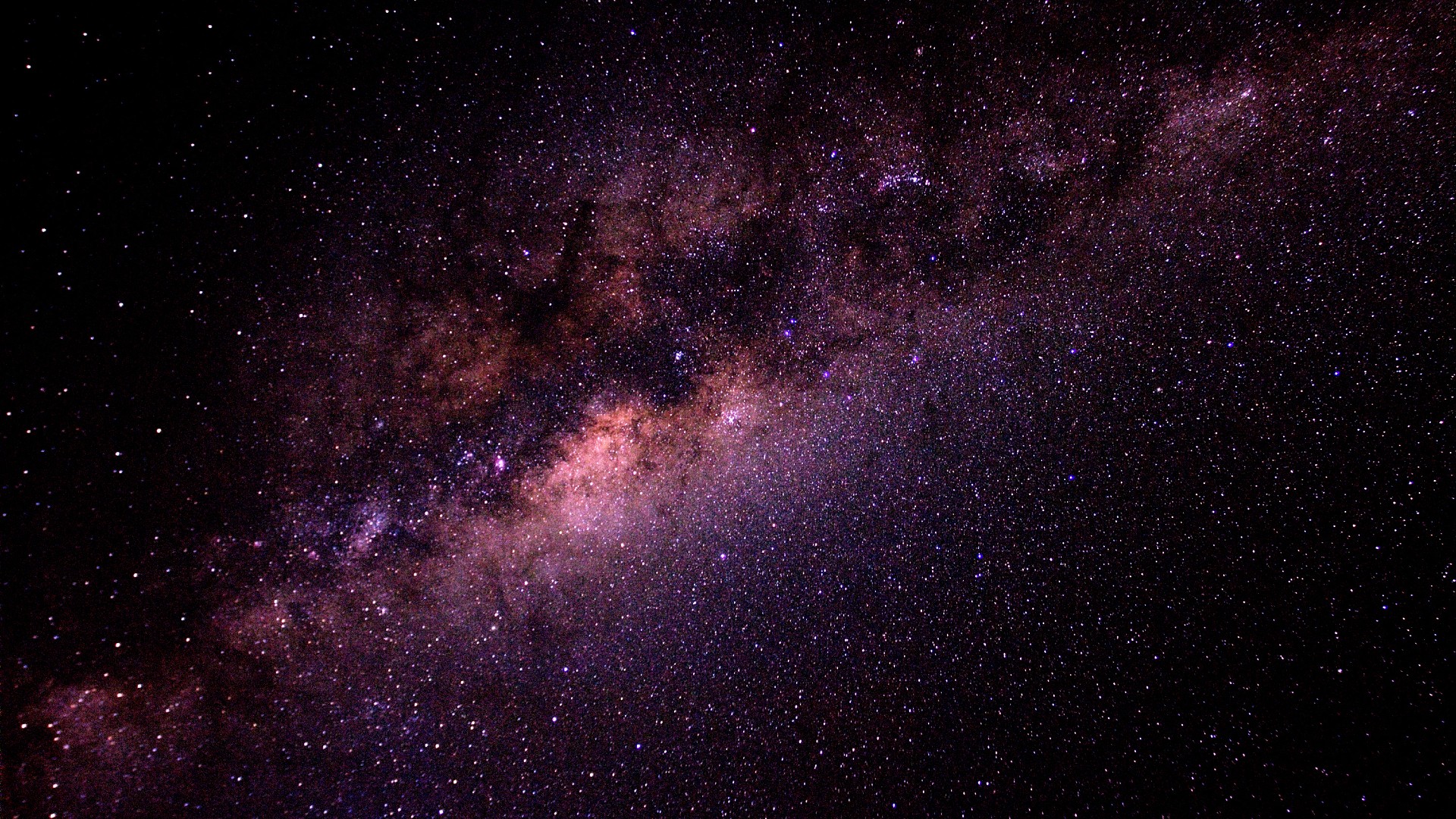Astronomers spot the most distant stars in the Milky Way — a million light-years away
The farthest one is nearly halfway to the Andromeda Galaxy.

When you think of the Milky Way, you probably picture the spiral arms of its disk — where you'll find our solar system — or the bulge at its heart.
But surrounding all that is the mysterious stellar halo, a vast region that's sparsely populated with the galaxy's oldest stars and much of its dark matter. Astronomers studying the stellar halo have just discovered more than 200 of the most distant stars in the Milky Way, with the farthest being more than a million light-years away, or nearly half the distance to our neighboring galaxy Andromeda.
To find these stars, the researchers analyzed data from a project called the Next Generation Virgo Cluster Survey (NGVS), which used the Canada-France-Hawaii Telescope (CFHT) on Hawaii's Mauna Kea to study galaxies in the Virgo Cluster, including M87.
Related: Milky Way lights up Guiana spaceport in stunning timelapse video
Although the study wasn't specifically designed to search for stars in Milky Way's stellar halo, known as RR Lyrae stars, the astronomers were able to pick 208 such objects out of the data.
"To get a deep exposure of M87 and the galaxies around it, the telescope also captured the foreground stars in the same field, so the data we used are sort of a by-product of that survey," Yuting Feng, a UC Santa Cruz doctoral student who led the study, said in a statement.
The RR Lyrae stars are identifiable by their pulsating brightness, which can be observed from Earth.
Breaking space news, the latest updates on rocket launches, skywatching events and more!
"The way their brightness varies looks like an EKG — they're like the heartbeats of the galaxy — so the brightness goes up quickly and comes down slowly, and the cycle repeats perfectly with this very characteristic shape," Raja GuhaThakurta, an astronomer at UC Santa Cruz, said in the statement. "In addition, if you measure their average brightness, it is the same from star to star. This combination is fantastic for studying the structure of the galaxy."
By measuring the brightness of the stars, the team has been able to confirm the theoretical estimates of galactic distances and will continue to use the data to refine galactic models.
"This robust sample of distant RR Lyrae stars gives us a very powerful tool for studying the halo and testing our current models of the size and mass of our galaxy," Feng said.
The team is presenting its research at the American Astronomical Society meeting in Seattle on January 9 and 11.
Follow Stefanie Waldek on Twitter @StefanieWaldek. Follow us on Twitter @Spacedotcom and on Facebook.
Join our Space Forums to keep talking space on the latest missions, night sky and more! And if you have a news tip, correction or comment, let us know at: community@space.com.

Space.com contributing writer Stefanie Waldek is a self-taught space nerd and aviation geek who is passionate about all things spaceflight and astronomy. With a background in travel and design journalism, as well as a Bachelor of Arts degree from New York University, she specializes in the budding space tourism industry and Earth-based astrotourism. In her free time, you can find her watching rocket launches or looking up at the stars, wondering what is out there. Learn more about her work at www.stefaniewaldek.com.
-
Unclear Engineer With that farthest star "nearly half the distance" to the Andromeda galaxy, are we sure which galaxy it is really "in"? Andromeda has more stars, but supposedly less dark matter, so is thought to have less total gravitational mass than the Milky Way. That would indicate that stars less than half way out to Andromeda should still orbit the Milky Way.Reply
But, some orbital parameters for this star would be interesting, to me at least. -
kristianna276 The sightings of wandering Solar systems in the halo of our galaxy, is a wonder to the mind. To say that they are the oldest stars is bewildering. I would assume that the youngest stars would be in the hallo of our galaxy. I know that the Milky Way is made up of smaller galaxies that had merged with our galaxy over the billions of years since it's birth. Sometime in the far distant future the Andromeda Galaxy will merge with the Milky Way creating a new galaxy. What is the evolution of a galaxy, and how long does it take for Stars to merge? Is this why the stars in the Outer Rim older than the inner? How old is the Andromeda Galaxy?Reply -
Pogo Likely, some were formed in clusters within the main part of the galaxy itself and ejected. It’s not surprising to find stars that far out. There are likely stars even far from galaxy clusters. There’s probably no where where ther’s Just empty space, just fewer stars, planets, small bodies.Reply
Just imagine what the night sky would look like between major galaxies; mostly nothing, but a couple fuzzies here and there. They may not even contemplate stars anywhere else. -
Helio Reply
Good question.Unclear Engineer said:With that farthest star "nearly half the distance" to the Andromeda galaxy, are we sure which galaxy it is really "in"?
Andromeda has more stars, but supposedly less dark matter, so is thought to have less total gravitational mass than the Milky Way.
This is surprising. Do you have a source on this? Perhaps it’s the DM ratio that is less. -
Unclear Engineer Link /15590-andromeda-galaxy-m31.html saysReply
"A spiral galaxy like the Milky Way, Andromeda contains a concentrated bulge of matter in the middle, surrounded by a disk of gas, dust, and stars and an immense halo. Though Andromeda contains approximately a trillion stars to the 250 billion in the Milky Way, our galaxy is actually more massive, because it is thought to contain more dark matter." -
Helio Reply
Thanks UC.Unclear Engineer said:"A spiral galaxy like the Milky Way, Andromeda contains a concentrated bulge of matter in the middle, surrounded by a disk of gas, dust, and stars and an immense halo. Though Andromeda contains approximately a trillion stars to the 250 billion in the Milky Way, our galaxy is actually more massive, because it is thought to contain more dark matter."
Given the likelihood that DM contributes to galaxy formation, it's hard to guess why a larger galaxy would have less.
My search did not produce much, but there does seem to be some indication that the Andromeda could have a little more DM, but perhaps very similar in DM mass.
From here:
"The total stellar mass is (10–15) · 10^10M⊙, 30% of which is in the bulge and 56% in the disc. None of the tested DM distribution models (Einasto, NFW, Moore, Burkert) can be falsified on the basis of the stellar matter distribution and the rotation curve of the galaxy. The virial mass M200 of the DM halo is (0.8–1.1) · 10^12M⊙ "
From Wiki here"The luminous matter makes up approximately 9\00d710^10 solar masses. The dark matter halo is likely to include around 6\00d710^11 to 3\00d710^12 solar masses of dark matter." -
Classical Motion Is that right? 250 billion stars to 1 trillion stars? That infers to me the Andromeda is much older than MW. But it could be just many more collisions. That also infers to me that Andromeda has a much larger halo. More collisions might mean a denser halo?Reply
Why are they described at close to the same mass? -
Helio Reply
That sounds about right. The Wiki article (link now repaired) states there are about 100 to 150 billion stellar masses. This, no doubt, equates to a much larger number of stars since more stars are greater than one stellar mass, so as many as 1 trillion stars seems possible.Classical Motion said:Is that right? 250 billion stars to 1 trillion stars?
This same estimate is mentioned here."By some estimates, the Andromeda Galaxy contains roughly one trillion stars. And it stretches more than 200,000 light-years in diameter. That’s significantly bigger than the Milky Way, which more recent estimates suggest is 150,000 light-years across (though the exact boundary of where either of these galaxies "end" is a bit nebulous)"
Adding DM puts it at about 800 billion solar masses, per Wiki. But it states the MW, suprisingly, is close to double that mass.
"As of 2019, current calculations based on escape velocity and dynamical mass measurements put the Andromeda Galaxy at 0.8\00d710^12 M☉, which is only half of the Milky Way's newer mass, calculated in 2019 at 1.5\00d710^12 M☉ "
So, on the one hand M31 seems significantly larger, yet, apparently, having much less total mass. How did that happen?
If this is true, then does the MW not have much more than 1 trillion stars? I have a hunch time may alter these estimates, or someone will bring in better references, hopefully.
Why are they described at close to the same mass?
That seems to have been the estimate prior to 2018....(also from that Wiki link)
"Until 2018, mass estimates for the Andromeda Galaxy's halo (including dark matter) gave a value of approximately 1.5\00d710^12 M☉, compared to 8\00d710^11 M☉ for the Milky Way. This contradicted earlier measurements that seemed to indicate that the Andromeda Galaxy and Milky Way are almost equal in mass." -
Unclear Engineer So, with the masses in question, it seems that just knowing the position of a star about midway between the two galaxies isn't enough information to tell us which galaxy the star "belongs to" (orbits?). Perhaps some measurements of the motion would be helpful.Reply
But, maybe the star is in the process of being stripped from one galaxy to the other.
When the galaxies eventually merge, I wonder is any of these far out stars will have even orbited much beyond the inter-galactic center-to-center vector. -
Helio Reply
Normally I would assume its motion would reveal its host galaxy, but perhaps not in this case since the free fall time is about 10E15 years, if I'm calculating that right -- Kepler's equation setting ecc. = 1, and Vi = 0.Unclear Engineer said:So, with the masses in question, it seems that just knowing the position of a star about midway between the two galaxies isn't enough information to tell us which galaxy the star "belongs to" (orbits?). Perhaps some measurements of the motion would be helpful.
If it has a fast radial motion, then that would be interesting.
